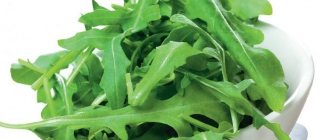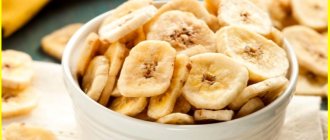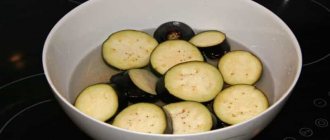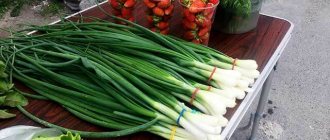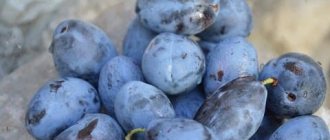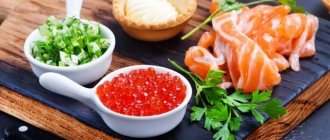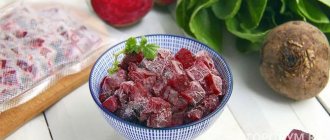AnyutaN — Oct 17th, 2016 Categories: Freezing
Tags: Fruit freezing
Are bananas frozen? This question may seem strange to you, because you can buy this fruit at any time of the year at an affordable price. But bananas can indeed be frozen, and in some cases it is even necessary. Today I will tell you about how and why bananas are frozen in the freezer.
Ingredients: banana, lemon juice Time to add: All year
Why are bananas frozen?
This idea may seem strange to some, but it is not entirely true. There are various reasons why you might want to freeze bananas over the long winter. For example, not all regions sell this fruit all year round. And some people just want to have them at hand at any time, and not have to go to the store to get them. But the most common reason is the short shelf life of fruits.
Everyone knows that bananas cannot last long. And if the fruit is already ripe, it will soon begin to deteriorate. And in order not to throw them away, the fruits can be frozen. And then you can prepare smoothies or cocktails with them, bake pies, add them to milk or porridge, make ice cream - you can use frozen fruits in different ways.
What methods of freezing bananas have we tried?
Each of these methods was tested on a small bunch of bananas. All 5 bunches were purchased in the same store on the same day. After preliminary preparation, all 5 “servings” were frozen at the same time in a large upright freezer. After completely freezing for 24 hours, some bananas were added to a simple smoothie and others were thawed to make quick cookies.
Neither method altered the taste of the banana, but cooking time, ease of storage, and mixing or thawing time helped determine the winner.
→ TOP 5 ways to keep bananas fresh longer
Selection and preparation of bananas
For freezing, choose ripe or even slightly overripe fruits. It is not recommended to use green ones, since the purpose of freezing is to preserve their current properties, and unripe bananas still need to ripen. If the peel begins to darken a little, it’s okay; it won’t affect the taste in any way.
The first thing you need to do is separate the bananas. It is advisable to wash the fruits, since it is not known how they were transported. After the fruits are washed, they need to be wiped dry with a towel - this condition must be fulfilled if you plan to freeze fruits in their peels. And working with dry products is much easier.
Preparing the Freezer
You don’t have to do any special steps to prepare the freezer before freezing bananas. It’s enough just to do standard cleaning, make room in the compartment for containers or bags of fruit and make sure that the temperature is not higher than minus 18 degrees. It will be good if the fruit compartment is equipped separately from vegetables and especially meat or fish.
Make room to place the fruit tray for the initial freeze for literally 1.5-2 hours. It should stand up straight so that the cut pieces do not roll down or touch each other. Otherwise they will stick together.
Method number 2. Peeled and frozen whole
- Time : 3 minutes to prepare, 2 hours to freeze
- Rating: 5/10
About this method . Peel the bananas, place them in a plastic bag and that's it! There's no chopping, no chopping, and the bananas are securely sealed to keep chilled in the freezer for the next three months. Whole bananas are easy to measure for thawing and baking, so the method seems most suitable for the home baker.
Results . Whole frozen bananas were difficult to cut and did not blend completely into the smoothie, but this method worked well when the recipe called for a certain amount of bananas to bake.
How to freeze bananas at home
There are different recipes for freezing these fruits at home. Which one to choose depends on the free space in the freezer, the purpose of use and your own preferences.
See also
How to properly freeze apples for the winter at home in the freezer and rules for storing fruit
Read
With peel
This is the easiest way to keep fruits fresh for the winter. Just pack the prepared fruits into bags and put them in the freezer. You can put all the fruits in one bag or each one individually, you can wrap the fruits in foil. Tip: Don't forget to label the packaging so you can consume your bananas before the expiration date.
Then you simply take out the required amount of fruit and defrost it in the refrigerator or at room temperature. The peel will darken, but this will not affect the taste. Fruits frozen in this way can be used in baking or added to already prepared dishes - for example, porridge or ice cream.
Without peel
This freeze is slightly different from the previous one. Place the peeled bananas on a tray, leaving a small distance between them. Pre-cover the tray with cling film or foil. Next, place the fruit in the freezer for literally 1.5 hours. Afterwards you can put them in a bag for storage. Make sure that as little air as possible gets into it. You can use suitable sized airtight containers. In this form, bananas are sent for final freezing.
Banana puree
If you don't have much free space in your freezer, you can freeze bananas as puree. To do this you will need a blender or food processor. You can also use a mixer. If the fruit is already overripe, you can mash it with a fork or potato masher. When using this technique, you will get a more liquid and homogeneous mass.
To extend the shelf life, you need to add a little lemon juice (a tablespoon per glass of puree).
Pour the puree into storage containers and freeze. Ice cube trays are perfect for this. When the puree freezes, you can transfer the cubes into a bag, after removing the air from it. Bananas frozen in this way are convenient to add to cereals, milk, smoothies, and to use for feeding your baby.
Sliced bananas
If you don't want to cut up the bananas later, or you just don't have a lot of freezer space, you can freeze the fruit in chunks. Peel the prepared fruits and cut into small rings up to 3 centimeters thick. Try to keep them approximately the same. Place the chopped fruits on a baking sheet or tray and place in the freezer to pre-freeze for 1.5-2 hours.
Afterwards, place the frozen pieces in a bag or container for freezing. For convenience, you can place each banana in a separate container.
In the future, you can use these pieces to make baked goods or cocktails, or decorate confectionery products.
See also
How to properly freeze ginger at home in the freezer for the winter and is it possible?
Read
Banana ice cream
If you want to get a ready-made dessert right away in winter, you can make ice cream. There are different cooking options.
Ice cream banana covered in chocolate. Ingredients:
- bananas – 3 pieces;
- chocolate bar - to choose from.
Preparation.
Cut the fruit in half (optional if small). Insert skewers or popsicle sticks into them. Melt the chocolate in a water bath, stirring constantly. Drizzle the chocolate over the fruit using a spoon. You can sprinkle coconut flakes, nuts or candied fruits on top of your choice. Place in the freezer to freeze.
Chocolate banana ice cream. Ingredients:
- bananas – 3 pieces;
- heavy cream - to taste;
- cocoa powder – 1 tablespoon.
Preparation.
Cut the peeled fruits into rings and place them in the freezer. In this case, it is better to leave the fruit there overnight. After 10-12 hours, remove the frozen fruits and place them in a blender bowl. Grind until you obtain a homogeneous consistency. Pour in a little cream during the process for a more delicate taste. To make the ice cream chocolatey, add cocoa. Place the ice cream in bowls and decorate to your taste.
Method number 1. Puree and freeze in one layer
- Time : 15 min
- Rating: 3/10
About this method . Peeling bananas and mashing them for future use is a very common technique in bakeries. The puree can be measured and frozen in small bags for specific recipes. All the mashing work is done ahead of time and you have frozen mashed bananas ready to go!
Results . Even though we were skeptical about this method, we had to try it. This option is best suited for baking and is not suitable for smoothies at all. The pre-mashed bananas couldn't be measured per smoothie and had a slightly starchy texture (even though the original bananas were perfectly ripe).
How to store frozen food
Like almost all fruits and vegetables, frozen bananas are stored in special storage containers: jars, airtight containers, bags. You can also use regular cellophane ones, but you need to make sure that as little air as possible remains inside.
The optimal temperature level for storing these fruits is 18-22 degrees. If your freezer is warmer, the shelf life will be much shorter. Therefore, it is desirable that the freezer has a function such as manual temperature control.
Preparing the Freezer
To speed up the freezing process, prepare one of the freezer compartments in advance and clear the lowest temperature zone from products previously placed for storage. Next, turn on its “Freezing” function or adjust the temperature control knob to set a lower temperature. At this time, the temperature inside the freezer will become lower, which helps protect against unwanted heat caused by storing warm food.
See also
TOP 6 ways to properly freeze red currants for the winterRead
Contraindications for eating banana
The list of contraindications that bananas have is small. However, it is worth taking them into account so as not to cause harm to health.
- Bananas should not be given to children in the first year of life. Otherwise, the risk of an allergic reaction increases.
- People with irritable bowel syndrome should not eat this product.
- Increased acidity of gastric juice is also a contraindication to eating yellow berries.
Now you know what properties bananas have. The benefits and harms of this most accessible of all exotic fruits depend on how much you eat the product and whether you take into account its contraindications. Provided you have a competent approach to including it in the menu, you will certainly be satisfied, full and healthy!
Chemical composition of the fruit
Banana is a real storehouse of fiber, pectin and dietary fiber. The product contains vitamins: A, C, E, K, B1, B2, B3, B6, B9, PP, choline and carotene. The yellow pulp contains the most vitamins of group B, of which the leading position belongs to pyridoxine (B6). 100 g of berries contain about 25% of the daily requirement of this substance.
Bananas are distinguished by a high concentration of minerals, among which the following are worth highlighting:
- iron,
- potassium,
- phosphorus,
- selenium,
- magnesium,
- zinc,
- sodium.
In addition, natural sugars, antioxidants, saturated fatty acids and organic acids are found in the fruits.
Features of storing peeled bananas
Sometimes situations arise when you need to try to preserve peeled banana fruits. For example, chopped for salad or before guests arrive. Most housewives do not know how to store bananas in this case. However, there are some tricks that can help out in such a situation:
The acid protects the fruit from darkening, so after cutting the fruit, it is recommended to sprinkle it with citrus juice or vinegar.
If you want to preserve banana pulp without peel for 2-3 days, then it is soaked in a vinegar solution. In a separate container, mix vinegar and water in a ratio of 1:4, and then place the peeled fruits in it for 3 minutes. After this, the bananas are removed and placed in a container that is stored in the refrigerator.
However, if you also ask “how to store bananas,” then the most effective methods for preserving banana fruits are freezing or drying.
What does the name mean
Historians suggest that bananas got their name, so to speak, from the light hand of Arab traders. In those distant times in Southeast Asia, banana fruits were very small by modern standards - no more than the finger of an adult.
Hence the strange name - “banana”, which in Arabic means “finger tip” [2].
According to another theory, the authorship of this name belongs to one of the nationalities that inhabited West Africa.
Where do bananas come from?
Content:
- Where do bananas come from?
- What does the name mean
- general characteristics
- Benefit for health
- The nutritional value
- Who benefits from bananas?
- Other benefits
- Possible hazardous properties
- How to choose and store correctly
- What to do with the skin
- Bananas in cosmetology
The first bananas are believed to have originated about 10 thousand years ago. And if this is so, then they claim to be the first fruits in the world that have survived to this day. It is known that the first banana trees grew in New Guinea, the Philippines and Indonesia. Over time, traders brought these plants to India, Africa, and Polynesia. The first written memories of this berry were found among Buddhists and date back to approximately 600 BC. e. And when in 327 BC. e. When Alexander the Great's army invaded India, the first thing they discovered were banana valleys. This is how the Western world learned about these yellow exotics. And by 200 BC. e. bananas reached China, where they “populated” the southern regions of the country. However, the fruits were not very popular here and until the twentieth century were considered strange and alien fruits.
Modern bananas, which can be bought on the market throughout the year, are very different from their wild ancestors, which had a lot of hard seeds and not very tasty pulp. Bananas as we know them appeared around 650 BC. e. in Africa, as a result of crossing two wild varieties, seedless and larger fruits were formed. Today, bananas are grown in at least 110 countries around the world and are one of the most sought after fruits. Americans alone eat significantly more bananas each year than apples and oranges combined [1].
How to defrost correctly
For frozen homemade bananas, the general rule is to use the lowest possible temperatures. A simple option is to transfer it from the chamber to the refrigerator. Most dishes do not require complete defrosting. Sometimes the product is used immediately. Or you need to let it melt slightly. In this case, leave for 30-60 minutes at room temperature.
Do not heat in a microwave oven or fill with warm or hot water. You should not send the workpiece to the radiator or place it on a hot lid of a saucepan or kettle. Not only the beneficial composition will suffer, but also the taste, consistency, and color will deteriorate. Champignons, sorrel and even kebab need to be defrosted correctly.
Defrosting bananas from the freezer
The nutritional value
These yellow fruits are a good source of vitamin B6, ascorbic acid, manganese, potassium, copper, biotin, and fiber.
Nutritional value per 100 g [10]
| Calorie content | 96 kcal |
| Squirrels | 1.5 g |
| Fats | 0.5 g |
| Carbohydrates | 21 g |
| Vitamin B1 | 0.04 mg |
| Vitamin B2 | 0.05 mg |
| Vitamin B3 | 0.9 mg |
| Vitamin B5 | 0.25 mg |
| Vitamin B6 | 0.38 mg |
| Biotin | 4 mcg |
| Folic acid | 10 mcg |
| Vitamin C | 10 mg |
| Vitamin A | 20 mcg |
| Vitamin E | 0.4 mg |
| Vitamin K | 0.5 mcg |
| Bor | 372 mcg |
| Calcium | 8 mg |
| Chlorine | 47 mg |
| Chromium | 0.17 mcg |
| Copper | 78 mcg |
| Iodine | 0.05 mcg |
| Iron | 0.6 mg |
| Magnesium | 42 mg |
| Manganese | 0.27 mg |
| Phosphorus | 28 mg |
| Potassium | 348 mg |
| Selenium | 1 mcg |
| Sodium | 31 mg |
| Zinc | 0.15 mg |
Benefits of bananas for the body
Bananas are not a tree at all, they are more like grass. However, the benefits of this fruit are simply enormous. If you apply a banana peel to a bruise, it will go away much faster. Bananas are high in calcium and magnesium. In the field, you can wipe your teeth with a banana peel, and they will be clean, plus this procedure will slowly whiten your teeth. After three weeks, your teeth will have a natural shade. In addition, bananas help treat acne. Banana contains antioxidants that protect your skin very well. Therefore, you can often find banana oils in creams and face masks. The site elgreloo.com would like to introduce you to a list of beneficial effects from eating bananas:
- Bananas are good for energizing. It contains sufficient sugar and fiber content, which is why you can so often find banana in cocktails for athletes.
- This fruit very gently cleanses the intestines and normalizes microflora.
- Eating bananas can reduce the number of bacteria in the stomach, a very good way to prevent ulcers.
- Banana is rich in vitamin B6;
- Banana increases the level of the happiness hormone. If you are sad, eat a banana, and any depression will be easier to cope with.
Banana, as you can see, is good in many ways, but it should not be abused by people who are prone to obesity or those with diabetes. However, you should not completely abandon it, as it contains a healthy glycemic index, which is necessary for diabetics. And while on a diet, you can easily snack on a banana, it is filling and low in calories.
Possible hazardous properties
The fruits, eaten in moderation, do not cause any significant side effects. However, excessive consumption of exotic fruits (more than five bananas a day) can cause headaches and drowsiness. This is especially true for overripe bananas. In rare cases, they can cause hyperkalemia, an increased concentration of potassium in the blood. Eating sweet fruits too often is not good for your teeth - it leads to the destruction of enamel.
Bananas can cause one type of food allergy - the so-called latex-fruit syndrome. This disease is the result of an immune system reaction to proteins found in natural rubber and certain substances found in bananas. By the way, this type of allergy can also be caused by kiwi, papaya, tomatoes, potatoes and avocado.
What can you cook from frozen bananas?
Frozen banana palm fruit is rarely used as a stand-alone treat. It is often used as an ingredient in amazing ice cream. Below is a simple recipe. There are other ways to use it.
Options for using banana frozen:
- bakery. The pieces can be added to any pie, and the puree is used for pancakes. The fruit makes delicious banana bread;
- smoothie. Use a frozen or slightly thawed product and place it in a blender along with other ingredients;
- various cocktails. Cubes and pieces are added to improve the taste, aroma, and interesting appearance in various drinks.
When adding to dough, it is important to consider that frozen product contains more moisture. You may need to add a little flour. Sometimes the pieces are rolled in corn or potato starch.
How to make ice cream from frozen bananas
We offer the most popular banana ice cream recipe. Paradoxically, it is recommended to use it when losing weight instead of harmful sweets. There are much fewer calories than in regular ice cream, cakes, and pastries.
Ingredients:
- 150 g frozen banana;
Cooking instructions:
- Pour the icy pieces into a blender.
- Add cow's or plant milk. If necessary, we use low-fat types.
- Beat for 30-40 seconds at maximum speed.
Soft serve ice cream can be consumed immediately. Or quickly transfer it into a mold, put it in the chamber for half an hour, then consume it frozen.
Simple ice cream - put a whole banana on a skewer, freeze, then top with chocolate glaze. She grabs it instantly.
Method number 3. Sliced and frozen in a bag
- Time : 5 minutes to prepare, 2 hours to freeze
- Rating: 7/10
About this method . This is where you peel the bananas and then place them in a large ziplock bag for slicing and freezing.
Results . As much as we hoped this method would be a winner, freezing the sliced bananas in the same bag they were sliced in resulted in a large "cake" of bananas. Sure, you could massage the bag to loosen some stuck bits and use them for smoothies/baking, but the result is uneven clumps that don't mix well; Moreover, the method did not make measuring bananas for baking any easier.
Where to keep green bananas so they ripen
During ripening, several processes occur in banana fruits.
Starch begins to turn into sugar.
The green pigment found in the peel disappears, after which the peel becomes yellow.
Before you start ripening bananas yourself, you should decide on the required speed. For example, if you leave fruits in a room with a temperature of +12...+15C, then ripening will slow down greatly.
If you want to quickly try ripe bananas, you should put them in a plastic bag along with the melon and put them away for 2 days.
If the speed of ripening does not matter to a person and he is ready to wait, then it is recommended to hang the bunch above the kitchen cabinet and wait 4-5 days. A long rope is stretched above the ceiling and the product is hung on it. This creates an imitation of wood.
After purchasing banana fruits, you should not leave them under the sun or near a hot radiator. In this case, even unripe bananas will immediately begin to spoil rather than ripen.
general characteristics
Bananas are exotic, elliptical-shaped fruits with creamy flesh covered with a dense, inedible peel. The banana tree can grow from 3 to 6 m in height. Fruits are formed in groups of 50-150 pieces, which are combined into clusters of 10-25 pieces.
Today, biologists know many varieties of bananas, but the most popular is the Cavendish. It is this variety that most often appears on our shelves. And it received its strange name in honor of the Englishman William Spencer Cavendish, who actually brought this variety from the Mascarene Islands around 1826 and began actively growing fruit in greenhouses [3].
In addition, all edible varieties of bananas known today are divided into two groups: dessert and vegetable (plantains) [4]. Representatives of the first variety may differ in taste, color and size. They come with red, pink, purple and even black skin. Vegetable varieties are valued for their high concentration of beta-carotene.
Method number 4. Sliced and frozen in a single layer
- Time : 10 minutes prep, 1 hour freezing
- Rating: 8/10
About this method . Peeling, slicing and freezing banana coins on a baking sheet is one of the best ways to freeze them. By slicing up the bananas and freezing them individually, you can measure out cupfuls of banana “coins” without any large lumps. A little prep (peeling and chopping) means your morning smoothie will come together faster thanks to the smaller pieces of banana.
Results . Not only are banana coins great in smoothies and baked goods, but they can also be turned into quick snacks (like chocolate-covered bites). Cooking and freezing times are relatively short, but not everyone has space for huge baking sheets in the freezer. Plus, freezing these "coins" in a tray means you'll need to come back later and move the frozen bananas to long-term storage, such as a ziplock bag or freezer-safe container with a lid.
